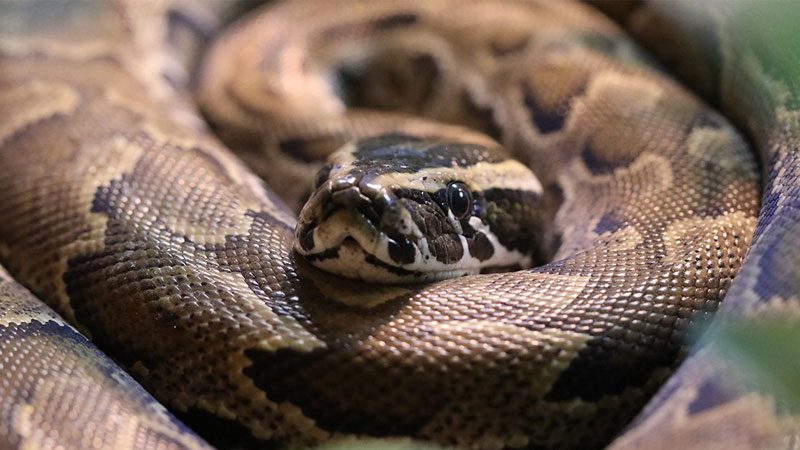
African Rock Python
Regenstein Small Mammal-Reptile House
Did You Know?
- African rock pythons are the largest snakes in Africa, averaging up to 16.5 feet long and weighing up to 121 pounds.
- They can climb but spend most of their time on the ground. They also hunt and escape threats by swimming.
- Contrary to popular belief, constrictors do not crush animals to death. Instead, they squeeze tighter every time their prey exhales. Eventually, the prey will not be able to take another breath.
Don’t See the Animals?
Why aren’t animals visible at all times? To promote positive animal welfare, we provide animals with choices. They can choose to spend time in areas that are out of public view.

Take an Animal Home with You
Overview
Scientific Name: Python sebae
Class: Reptiles
Diet: Terrestrial vertebrates like monkeys, crocodiles, lizards, and antelopes (also fish)
Range: Sub-saharan Africa
Endangered Status: Near Threatened
More Information
African rock pythons have colored scales in a range from yellowish to gray-green, along with dark blotches that form staircase-like patterns on their backs. Their bellies are lighter in color and their heads are relatively small and triangular, with six to eight heat-sensing pits used to hunt. They have long, curved teeth to bite prey.
These constrictors are nocturnal and relatively solitary except during breeding season. They are also considered aggressive when feeding and if threatened. When digesting food, they can be vulnerable to hyenas and African painted dogs. African rock pythons mate between November and March, after which females lay eggs in tree hollows, termite mounds, or animal burrows. After incubating 20–100 eggs for up to 80 days, females leave, and the young are independent from birth. These snakes mature between 3–5 years of age.
